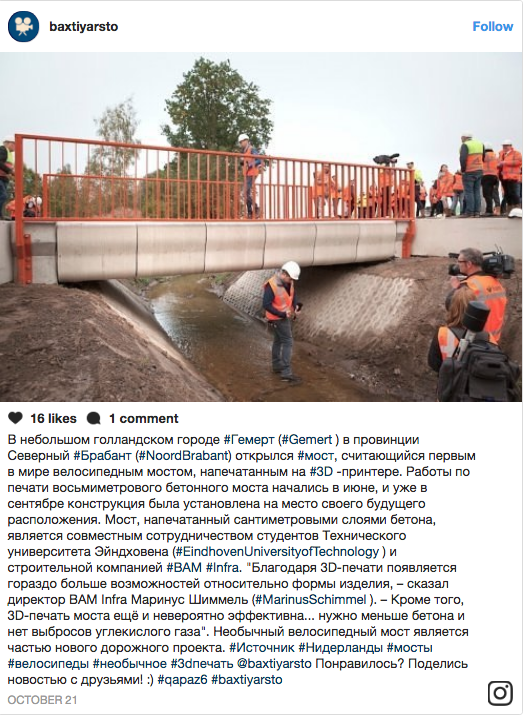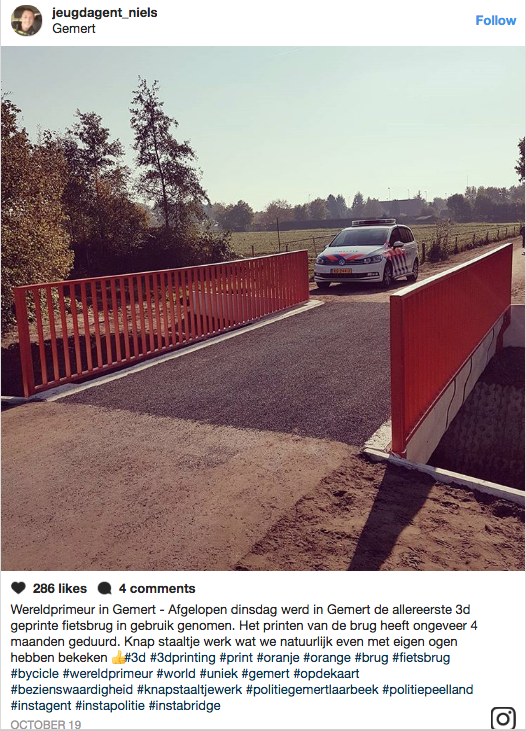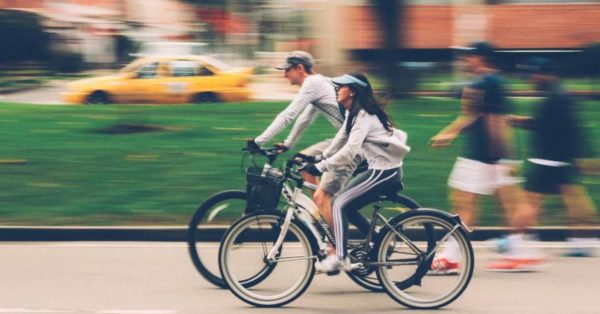A group in the Netherlands may have found a viable solution. A team of researchers from the Eindhoven University of Technology has recently 3D printed a concrete bridge. While people have experimented with 3D printed bridges before, the university researchers made this bridge specifically for cyclists in Germert, Netherlands.
The team printed the bridge at the University using their large research and development printer. After three months of hard work, the team completed the bridge and were able to put it to use. All in all, it took 800 layers to build the futuristic piece which spans roughly 26 feet long and 11 feet wide.

As the first 3D concrete printed civil infrastructure piece, the bridge had to undergo careful testing before civilians were able to use it. The team checked the structure’s strength by placing a 5-ton weight on it. Even though 5 tons is much more weight than the bridge will probably ever need to carry at one time, the team wanted to err on the side of caution. Luckily, the new bridge passed the test and is now open for cyclists to pedal across all day.
The bridge is a significant development for eco-friendly builders because it creates less CO2 emissions than traditionally built bridges. The printer is programmed to make the exact amount of concrete needed for a structure, so there is less material required for projects. The efficiency of printing also eliminates the possibility of wasted materials. The traditional method of filling molds with concrete was not as streamlined and consequently produced a much higher carbon footprint.
Without the limitation of molds, builders also now have the freedom to make any shape they want. The lack of formwork structures for the molds saves not only the need for materials but also cuts down the time needed to build. The team estimates that 3D printing concrete is about three times faster than traditional concrete building methods.

The researchers expect that despite constant wear and tear from hundreds of cyclist a day, the structure should be fine for at least thirty years. This estimate is in part due to the bridge’s design. The team was able to weave in steel cable in between strips of concrete as reinforcement. This subtle addition allows the concrete to perform better under stress.
The success of this bridge points to a promising future. The team of researchers is now able to turn their attention to building larger concrete structures, and the university is already working to design and print five houses with this technique. With new technologies offering lower emissions dwellings, people may be able to one day order printed homes in the near future.
Source: Green Matters
Women of Green is TURNING UP THE VOLUME of the feminine voice on the planet in order to create the world we know is possible.
